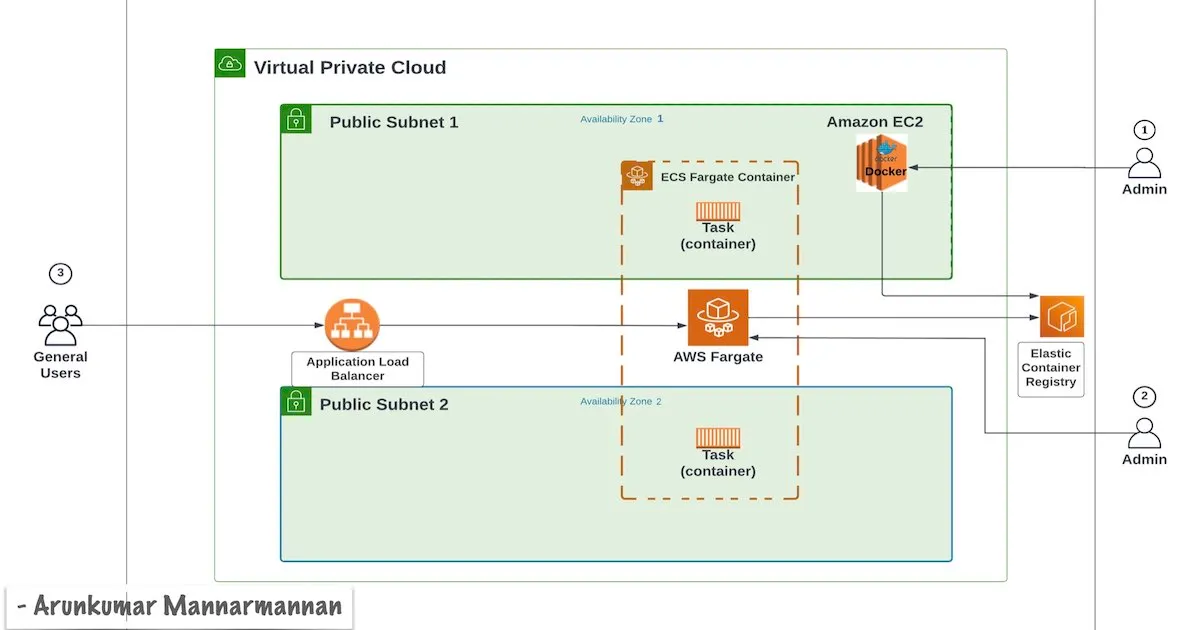Proven Best Practices for Maximum Impact - Cloud Migration
Unlock the power of cloud migration with tried-and-true best practices for maximum impact. This article combines real-world examples, easy-to-follow architecture diagrams, and expert insights to help businesses achieve success in their transition to the cloud.
Published Mar 29, 2024
Dear Cloud Enthusiasts,
I created an architecture diagram and shared a detailed guide via the provided below URL. However, when it came to putting these plans into action, I encountered several unexpected hurdles. This highlights the importance of following proven best practices for a successful cloud migration journey. Let's delve deeper into this topic, uncovering practical insights and essential strategies to overcome challenges and ensure a smooth transition to the cloud.
Click the below link to see the detailed step-by-step guide.
Throughout this discussion, we will delve into a spectrum of critical aspects surrounding cloud migration, including subnets, security groups, DevOps, processes and overarching best practices adopted by leading organizations.

Let's examine some of the challenges encountered during the implementation phase. Many practical obstacles encountered while executing the cloud migration plan.
- Addressing time-consuming processes in each phase.
- Implementing container environments within private subnets.
- Implementing Zero Trust architecture with ECC connectivity.
- Ensure compliance and regulatory requirements.
- Configuring necessary security groups for secure container environments.
- Coordinating with DevOps, Cloud Architecture, Application SME's and many other teams.
- Ensuring adherence to organizational processes and protocols.
- Overcoming potential conflicts and discrepancies in priorities.
Let us deep dive common best practices journey through real-time based on my experience.
- Proper planning and assessment.
- Create a comprehensive task list outlining all necessary steps and milestones.
- Develop a detailed checklist with every aspect of migration process.
- Conduct regular progress meetings to review tasks and address any challenges.
- Ensure timely participation of stakeholders and resources from diverse teams in all meetings.
- Ensure adequate time allocation for other teams to fulfill their respective SLAs.
- Ensure that all requests are documented and properly tracked through ticket creation.
- Ensure zero-trust architecture across all environments for enhanced security measures.
- Ensure necessary firewall connectivity (ECC) is established well ahead.
- Ensure compliance and regulatory requirements with automated CD pipeline.
- Implement access restrictions, such as limiting AWS console access to specific resources to enhance security measures and prevent unauthorized access.
- Vault: Ensure the implementation of secrets management using HashiCorp Vault or AWS Secrets Manager to securely store and manage sensitive information, enhancing data protection and access control mechanisms.
- NPT: Enforce Non-Permitted Technical Verification (NPT) as an integral part of the Continuous Deployment (CD) pipeline to detect and mitigate unauthorized technical changes, ensuring compliance and security throughout the deployment process.
- Request necessary AWS console, GitHub, and Jenkins access.
- Implementing container environments within private subnets.
- Ensure the availability of test servers for the Proof of Concept (PoC) phase.
- Enforce mandatory security measures for Docker sessions to safeguard containerized environments against potential vulnerabilities and unauthorized access.
- Implement and enforce a Blue-Green deployment strategy to facilitate seamless rollback processes and minimize downtime during deployment rollbacks.
- Cost saving: Implement a mechanism to automatically delete unused jobs or tasks, stale resources after a specified period, optimizing resource utilization and maintaining a clean and efficient deployment environment.
- Containerization: Adopt industry best practices standards for containerization to ensure consistency, security, and efficiency in managing containerized applications across the deployment lifecycle.
- Implement mandated automated Continuous Deployment (CD) processes.
- Incorporate mandatory Veracode, SonarQube, and compliance checks into the Continuous Deployment (CD) pipeline to ensure code quality, security, and adherence to regulatory standards throughout the deployment process.
- Incorporate Karate testing and performance testing as essential components of the Continuous Deployment (CD) pipeline to ensure comprehensive testing coverage and validate the functionality and performance of deployed applications in real-time environments.
- SOD: Enforce segregation of duty policies to distribute responsibilities and permissions among team members, reducing the risk of unauthorized access and ensuring accountability and integrity in the development and deployment processes.
- GitHub: Ensure that GitHub repositories adhere to industry best practices standards**.**
- Enforce mandatory branch protection policies to safeguard critical branches.
- Limit the maximum number of branches to streamline repository management.
- Conduct periodic reviews and archive unused repositories.
- Jenkins: Ensure Jenkins configurations and workflows adhere to industry best practice standards**.**
- Automate the creation of folder structures for each business unit.
- Restrict parallel builds to manage resource utilization effectively, prevent performance bottlenecks, and maintain stability in the Jenkins environment.
- Enforce limits on the maximum number of jobs in accordance with industry best practices recommendations.
- Leverage infrastructure as code (IaC) to manage and maintain master and agent servers, ensuring consistency, scalability, and resilience in the Jenkins infrastructure deployment and management processes.
Maintaining patience during cloud migration is like waiting for a slow download—it might test your nerves, but the end result is worth the wait! :-)
Happy cloud journey !!
Connect with me on LinkedIn for more knowledge sharing.
